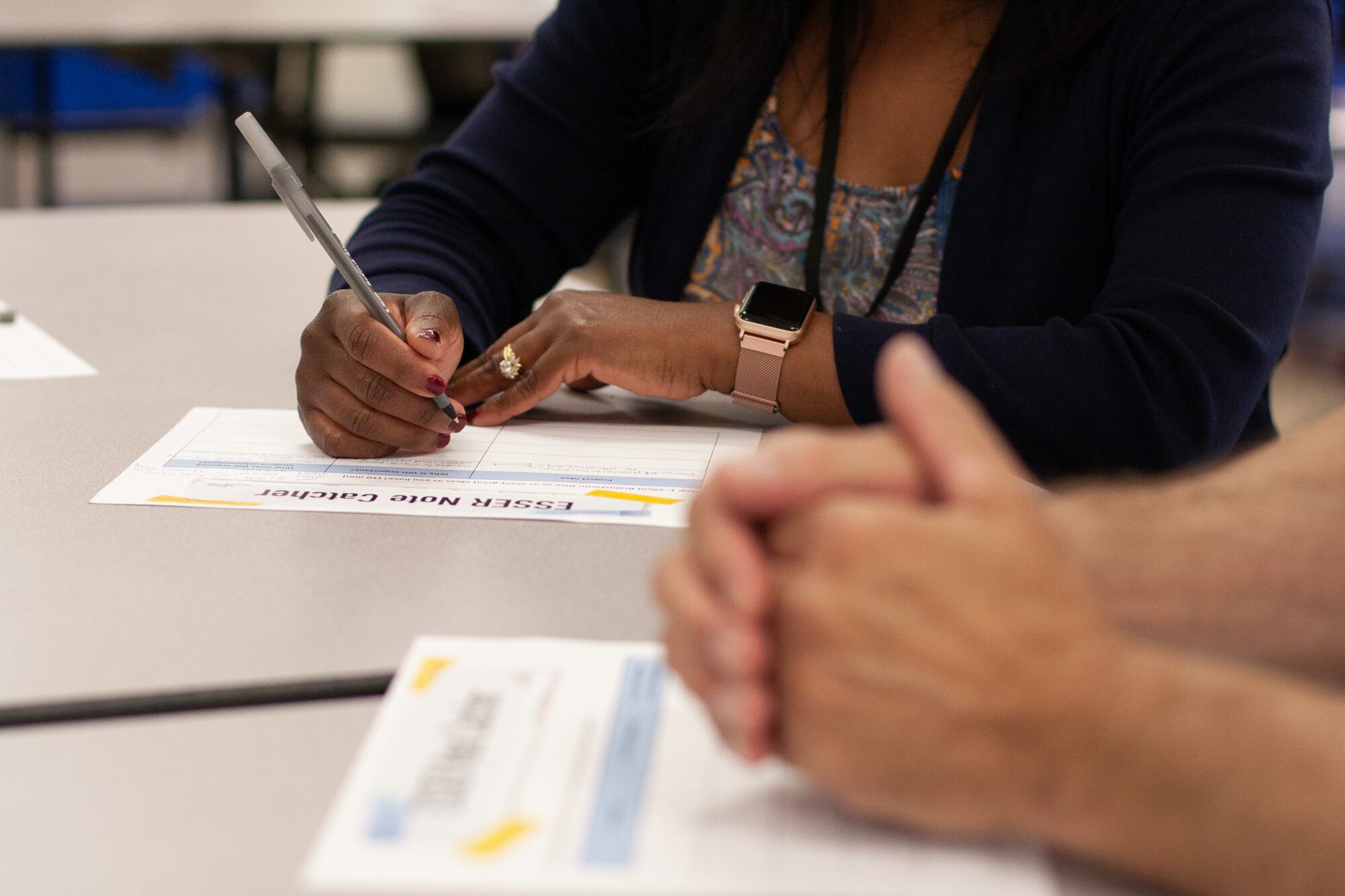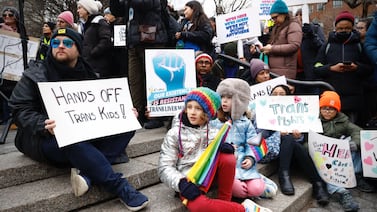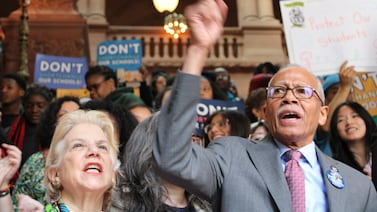Indianapolis Public Schools has spent around 10% of its federal COVID funding to date, directing most of the money to keeping schools open and staffed.
That figure is low compared to other districts in Indiana and across the country. But IPS officials say the state has approved its plans for another 40% of the funding, and that it has created an internal budget that accounts for the full allocation.
With $213.5 million in Elementary and Secondary School Emergency Relief dollars — the most of all Indiana districts — IPS must be deliberate in its spending, said Sarah Chin, deputy chief of staff.
“A district that only received a couple million dollars might have honestly been able to spend all of it on immediate COVID response, like PPE, testing, and technology,” Chin said. “IPS has a much bigger responsibility and also much bigger opportunity to use these dollars to rapidly accelerate student achievement, which means launching an enormous set of new district initiatives and student programming in a very short time horizon.”
The lion’s share of the $21 million spent so far has gone toward what the district describes as “stabilizing schools.” That means avoiding staff cuts due to enrollment drops, and purchasing the personal protective equipment needed to keep doors open.
But with COVID protocols easing, and Indiana schools able to stay open consistently, a growing portion of the funds is going to tracking and improving academics. And district leaders also expect to direct some of the funding toward improving IPS’ physical and digital infrastructure.
“The amount of dollars we have available for things that advance student learning, that’s ultimately going to be contingent on how much it costs us to keep schools open and safe,” said Chin at a school board meeting in December.
There’s no typical way that the nation’s 14,000 school districts have chosen to spend their emergency funding so far, said Katie Silberstein, a research fellow at Georgetown University’s Edunomics Lab.
Some have prioritized salaries or pay raises, while others have extended the school day, or year, she said.
Districts tend to spend the funding in the order that they received it. The latest and largest pot of money — ESSER III — is likely to be the funding source for capital improvements, but also requires districts to reserve some money to address learning loss, Silberstein said.
“A lot of things can be justified as academic interventions or investments,” Silberstein said. “The big question for us is: Are your investments working? And we’re having trouble finding that data.”
The percentage that IPS has spent so far is comparatively low, Silberstein said. Districts may be slow to spend their relief money due to being unfamiliar with having such a large amount of funding all at once, she said. Or they may face a slow start to capital projects, or roadblocks to hiring.
Chin said IPS has applied to the state and been approved for projects representing 40% of its ESSER allotment, but that officials don’t submit those applications until the district is ready to spend the money.
As a result, some future projects may be accounted for internally, but have yet to be submitted to the state, such as $4 million earmarked to match tutoring scholarships from the state, when those become available.
Furthermore, Chin said, many costs are long-term, or will grow with time, like the tutoring pilots launched at a limited number of schools this spring.
“This represents only a fraction of the total amount we will spend on tutoring as we prepare to scale and expand tutoring across the district over the next two years,” Chin said.
The district tracks its expenditures online. Here are the most notable categories of spending so far.
Keeping schools open and students in person
- The district’s single greatest spending category has been $8.9 million on preventing layoffs due to enrollment declines that resulted in less state funding, according to a December ESSER presentation. This includes funding teachers in K-12 grades, as well as food service staff. Enrollment declines are a major source of concern for the district’s long-term outlook. Superintendent Aleesia Johnson has predicted the district will fall into the red by 2028 unless it makes changes.
- Another $2.2 million has gone to COVID safety, including purchasing COVID tests and personal protective equipment.
- After offering a $300 incentive to each staff member to get a COVID vaccine by September 2021, IPS spent $813,800 on the initiative and reported a 71% vaccination rate in November.
- The district has spent $11,500 so far on its newest staff retention initiatives through a program known as “Proving What’s Possible.” These initiatives include three rounds of attendance bonuses, a telehealth counseling service, and a pilot program to allow teachers more flexibility in working from home. The first round of attendance bonuses will be doled out this fall.
- Around $960,000 has been spent on increasing enrollment and attendance, including $132,000 on recruiting students, and $828,000 on community programs focused on keeping students engaged. The latter category includes the launch of City Connects, which places a coordinator at school sites to identify students’ out-of-school learning challenges, and AfterSchool HQ, which is meant to centralize the district’s after-school activity offerings on a single platform for parents.
- IPS has spent $262,200 on technology measures, including relocating its data center and purchasing enhanced cybersecurity software.
Tracking and improving academics
- The district has spent $2.6 million on purchasing new English/language arts and math curriculum materials, as well as $576,300 on curriculum-focused professional development for teachers.
- Around $492,600 has gone to what the district describes as “turnaround strategies.” This category includes teacher coaching, such as CT3 coaching and University of Virginia’s Partnership for Leaders in Education in some high needs schools.
- Almost $400,000 has gone to continue funding Future Centers at the four district high schools. These centers, started in 2018 via a $2.87 million grant from the Lilly Foundation, provide college and career counseling for high school seniors.
- Around $6,200 so far has been spent on summer school.
Managing and distributing ESSER funds
- The district is also responsible for sharing ESSER fund. It has sent $4.1 million to nonpublic schools, township schools, and innovation schools, as state policy requires. Another $248,900 has gone to administering ESSER grants and projects.
Aleksandra Appleton covers Indiana education policy and writes about K-12 schools across the state. Contact her at aappleton@chalkbeat.org.







